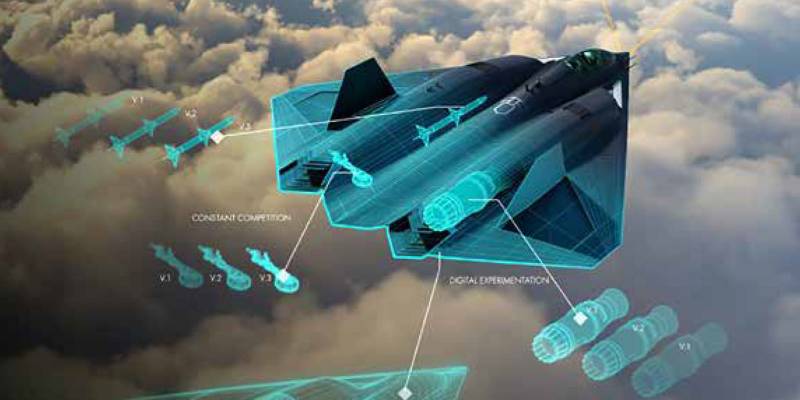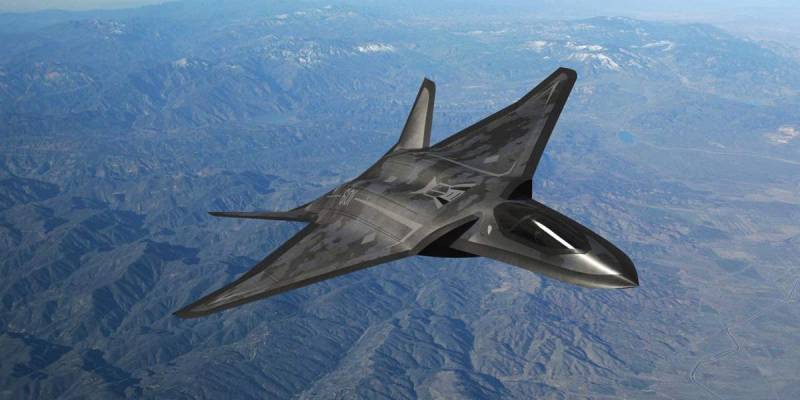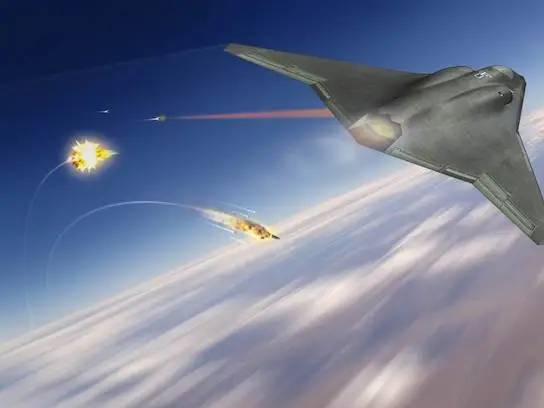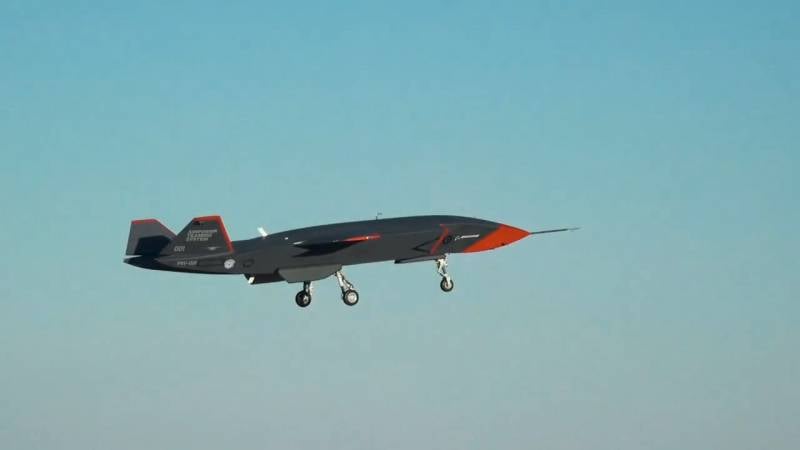CCA "loyal wingman" project for the US Air Force

US Air Force NGAD manned aircraft concept
Currently, specialized Pentagon organizations from the US Air Force and commercial contractors are working on several projects aviation next generation technology. In particular, within the framework of the large Next-Generation Air Domination program, the possibility of creating a combat unmanned aerial vehicle Collaborative Combat Aircraft, capable of accompanying aircraft and assisting them in carrying out missions, is being explored.
Slow progress
The NGAD program started several years ago and envisages the development of a number of types of combat and support aircraft that could enter service with the US Air Force in the future. Within this program, much attention is paid to unmanned technologies. In particular, the concept of “faithful follower” is being actively developed.
In early 2022, Air Force leadership for the first time openly mentioned a new “loyal wingman” project from the NGAD program - Collaborative Combat Aircraft. For reasons of secrecy, and also, probably, due to the early stage of work, at that time they could only reveal the very fact of the existence of the project, as well as its most basic tasks and goals.
Subsequently, the Air Force leadership repeatedly recalled the CCA project and announced new details, complementing the existing picture. The latest statements of this kind were made a few days ago. On November 13, at the Center for a New American Security (Washington), US Air Force Secretary Frank Kendall made a presentation and answered questions. He paid special attention to the CCA project and revealed new interesting information.
From statements by officials, it is now known exactly how the Pentagon plans to develop the unmanned component of tactical aviation, in what time frame the new project will be implemented, how much equipment will be purchased, what functions it will receive, etc. At the same time, based on the available information, additional conclusions and forecasts of various kinds can be made.

Lockheed Martin's Vision for NGAD
Timing and volumes
From last year’s statements by F. Kendall, it followed that in the near future the Air Force planned to engage in research work and formulate the general requirements and features of the future CCA UAV. These activities could be completed by the end of fiscal year 2023. However, they are not finished yet, as reported at a recent event.
In FY2024 planned to begin the full development of a promising project. A corresponding competition will be announced, and aircraft manufacturing companies will be able to offer their versions of the future “faithful wingman” that meet the customer’s requirements. They want to complete the competitive part of the project, complete development and the entire range of tests in the next five years.
The timing of the competitive development will be positively affected by the activities already carried out. As it turned out, by now potential competitors and contractors had worked out general issues and submitted preliminary projects to the Air Force. Probably, after the launch of the competition they will develop and reach a new level.
In the long term, at the end of the current decade or later, the CCA project will be able to reach the stage of production and procurement of serial equipment. According to F. Kendall, these purchases will be carried out under “black” items of the military budget, and information about them will be closed. However, the minister named possible production volumes - the air force requires at least a thousand unmanned “wingmen”.
The production program will be relatively cheap. The CCA project is tasked with reducing the cost of aircraft. The cost of such equipment, depending on the configuration, should be three or four times lower than the price of the F-35 fighter. This allows us to calculate the target cost of a promising CCA aircraft and the production program as a whole.

Hypothetical fighter from Northrop Grumman
It should be taken into account that by the time production starts, the Air Force's plans may change. Exact volumes of the future order, production dates, etc. will depend on the results of ongoing research and development work. For obvious reasons, these issues cannot yet be accurately predicted.
Technical issues
According to the latest words of the US Air Force Secretary, the CCA project is still at the stage of developing its appearance and tactical and technical requirements. It is likely that these works will be completed in the near future, but their results will not be available to the public. However, the main plans and wishes of the air force have already been revealed.
It is assumed that the CCA drone will be made in the form of a full-size aircraft. Perhaps it will be similar to existing or future Air Force equipment. At the same time, the device should be smaller and lighter due to the absence of a cabin and other on-board equipment.
Flight performance must also be at the level of the manned aircraft with which the CCA will interact. F. Kendall noted the need to improve takeoff and landing characteristics - the UAV should be able to operate from any airfield and even from highways.
An interesting approach to the formation of a complex of on-board equipment and weapons was chosen. Unlike manned fighters, the CCA will not receive a full complement of avionics and weapons with all the desired features. Only modules and devices for solving specific problems will be present on board. This will reduce the cost of each UAV while maintaining the necessary functions.
It is assumed that a manned aircraft will control the flight drones, each of which will have its own function - to search for air and ground targets, fight enemy defenses, attack identified targets, etc. Moreover, the aircraft itself, having a full set of equipment, will be able to perform all such tasks. The combined use of manned and unmanned equipment with different equipment is expected to provide tactical and operational advantages.

Boeing's experienced "loyal wingman"
Bold plans
Thus, the US Air Force continues to develop the concept of a “faithful wingman” and is approaching the stage of developing a UAV of this kind, suitable for full operation and combat use. The appearance of such a product and the requirements for it are being formed, and the competitive design stage should begin in the coming months. At the same time, its potential participants have already worked through some issues and presented their preliminary proposals.
The CCA project builds on the accumulated experience in the field of “faithful wingmen” and should bring together the best solutions in this area. In particular, based on the experience of previous projects, it was decided to build a full-size aircraft, but at the same time refuse to equip it with all possible instruments and weapons. This approach will provide the required combat effectiveness when used in groups under the command of a manned aircraft, and will also reduce the cost of construction and operation.
The financial aspects of the project are of particular interest. The Secretary of the Air Force aims to reduce the cost of CCA UAVs to 25-33 percent. from the current price of a full-fledged F-35 fighter. According to available information, the latest batches of F-35s cost taxpayers approximately $82 million each. Accordingly, the price of one CCA should be in the range of $20,5-27,3 million. This is a lot, but significantly less than the cost of other equipment. However, the construction of more than a thousand UAVs will cost tens of billions of dollars.
Plans and reality
At the moment we are talking only about research work, preliminary projects, evaluations, etc. The full design of the CCA drone on a competitive basis will begin only in the coming months and will take some time. Follow-up efforts will take several more years, and completed UAVs will only be able to reach the Air Force by the end of the decade.
The NGAD program in general and the CCA project in particular are of great interest to the US Air Force - they will lay the foundation for the subsequent development of tactical aviation. However, to obtain such results in the future, you need to work actively and productively now. Whether the Air Force and industry will be able to complete their tasks and implement plans is unknown.
Information